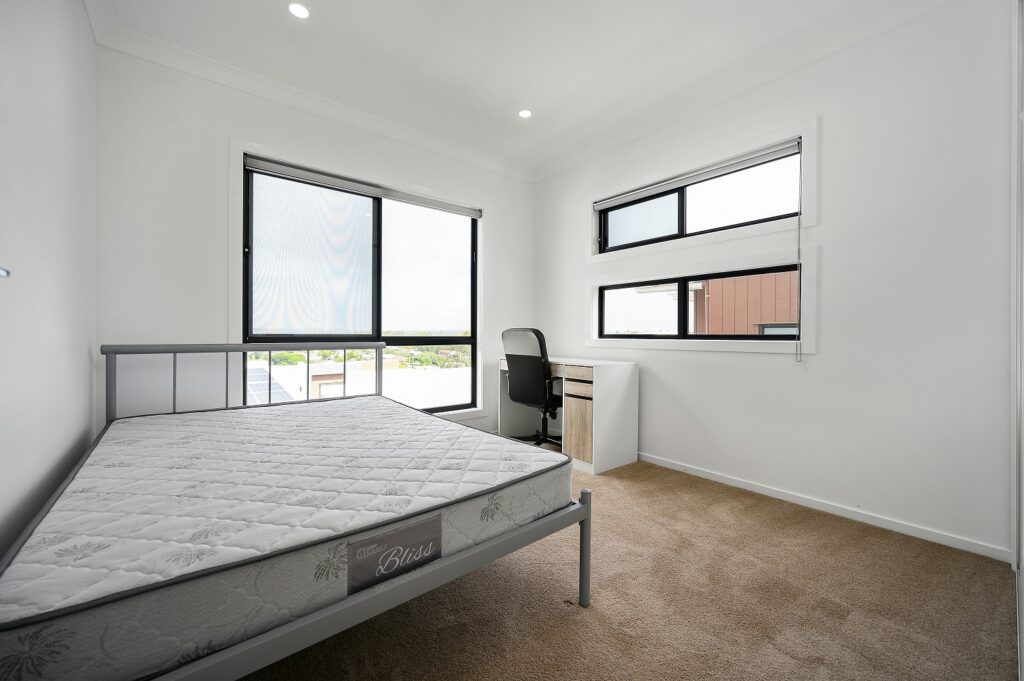Seriously, folks, this might just be the coolest real estate-related stats tool I have played with in a long, long time.
And the best part is – it’s free!
Now I know how you lucky readers feel when you stumble upon TRB for the first time, right?? 🙂
I’ll be honest, I had never heard of Nestpick before last week, but consider this site bookmarked.
I had also never heard of “Ahuntsic-Cartierville,” an area in Montreal, but given it falls to the bottom of this price index in oh-so-many categories, I’m definitely more familiar with it now.
Nestpick is described as “the largest search engine for furnished apartments,” and operates worldwide. Another note on the website homepage reads, “Nestpick is the biggest platform to search for mid-to-long term rentals,” and specifies that there are over 500,000 listings from 80+ providers in 130 cities worldwide.
They have put together something called the “Neighbourhood Price Index 2019” which looks at 740 neighbourhoods, worldwide, and ranks them according to different affordability factors.
I downloaded all the data into Excel, and I spent all Sunday playing with it.
Now any time a website, newspaper, university et al publish something like this, you can take it with an ever-so-small grain of salt, if you’d like. The “neighbourhoods” according to the publication might not be exactly how those residents of the area see it, the sources for statistics might not be the ones you would use, there’s the exchange rate factor (plus fluctuations), etc. But from what I can tell, this index is the first of it’s kind. In fact, Nestpick even describes it as such:
This price index, the first of its kind in terms of size and scope of comparison, illustrates both the affordability and inequality gap in cities around the world.
But they’ve taken the simple “index” one step further than most data-amalgamations would, by including something called the “Inequality Index,” which I think would make a lot of people, especially those in Toronto, go wild.
The world is all about equality today, and thus an “Inequality Index” is going to be hot no matter what conclusions it provides.
Here are the measures the Index looks at:
- The cost for a single person versus a family unit.
- The monthly salary needed in order to afford an apartment in each neighbourhood.
- The percentage of disposable income it equates to.
- The number of hours working on minimum wage it would require to afford the monthly rent in each area.
The final measure was that “Inequality Index,” but I’ll come back to that.
The Index is not perfect, ie. it doesn’t include Vancouver, for example. The only two cities included in Canada are Toronto and Montreal, but the logic behind picking the cities they did was as follows:
To begin the research, we first compiled a list of cities around the globe that are attracting influxes of highly skilled workers, as well as those which are popular with individuals looking for lifestyle or economic opportunities.
Call it what it is, but overall, there are 27 countries represented, and 50 cities.
I suppose my critiques would be highlighted by the fact that, say, 78 of the 740 neighbourhoods are in Berlin, which seems highly unnecessary, but as I said, take this Index as a snapshot of what’s happening worldwide, and ultimately, as with everything we do here on Toronto Realty Blog, how our city compares. I would also add that the symbol used in their graphic is that of a British Pound, but they use a “$” in the Index. It’s not noted anywhere which currency this is, but I would assume the almighty Greenback reigns supreme.
I’m mainly interested in the average rent per square foot of a 1-bedroom condo, since the idea of a “family apartment” doesn’t relate to Toronto.
The monthly salary required is a very interesting measure since it’s looking not only at the average rent, but also the average income, and thus comparing Toronto to, say, New York would look at not only the cost of real estate but also incomes.
The percentage of disposable income required is interesting if only for the fact that it’s depressing. Although surprisingly, only 79 of the 740 neighbourhoods saw this number over 100%, and I figured that would be a lot higher.
The idea of “number of hours working on minimum wage” is interesting, but not really applicable. The notion of whether or not a minimum-wage worker in Toronto “should” be able to afford to rent a condo in downtown Toronto is a topic for another day. Perhaps tomorrow, incidentally, as Justin Trudeau will look to put the SNC scandal behind him by starting to give out FREE STUFF up until the election, but I digress…
The first thing I wanted to do was simply compare downtown Toronto to downtown Manhattan.
Downtown Manhattan – $67.44 per square metre ($6.27 per square foot)
Midtown Manhattan – $57.87 per square metre ($5.38 per square foot)
Downtown Toronto – $30.94 per square metre ($2.88 per square foot)
Now the first thing you might note is that $2.88 per square foot is not anywhere near what downtown Toronto condos are going for, per square foot. You’re not renting a 500 square foot condo for $1,440 per month. Well this index includes apartments, and as I said at the onset, we don’t know what their definition of “downtown” is.
I’m primarily interested in this index for comparative purposes; not to suggest the integrity of the data doesn’t matter, but rather our minds are so wrapped up in downtown condos that we can’t stop to question what an apartment in Moss Park or St. Jamestown rents for.
Right off the hop, we note that it costs about 2.18 times as much to rent in Downtown Manhattan than in downtown Toronto.
And the monthly salary required to rent is $5,270.22 in Toronto compared to $9,667.57 and $9,650.90 respectively in the two Manhattan neighbourhoods.
What I find very interesting, however, is that despite how much more expensive it is to live in Manhattan, the “Inequality Index” is far greater in Toronto!
Downtown Manhattan – 51.39%
Midtown Manhattan – 46.09%
Downtown Toronto – 105.13%
This is how they define the Inequality Index:
Deviation from the median price per city for single person apartment rents per sq. m. If the deviation is 100%, that means that the median price of the district rent is the same as the median rent in the city. If it is more than 100%, the apartments in the district are more expensive than average (if it is less, then less expensive).
I know, I know, it’s so cliché to automatically compare Toronto to New York! But that’s what Torontonians love to do.
What about other neighbourhoods in major North American cities?
San Francisco – $60.68 per square metre
Downtown Boston – $51.38
Downtown Los Angeles – $42.08
River North, Chicago – $38.18
Downtown Miami – $32.99
Old Montreal – $30.94
Specifically in San Francisco, there’s one area called “Financial District South” which checks in at a whopping $74.96 per square metre, or almost $7 per square foot. That makes downtown Manhattan look cheap, and I don’t think the real estate is as nice; I think it’s just really expensive in San Francisco in 2019!
There just so many things to search on this index. I didn’t really know where to start, and didn’t really know where to stop either.
Here are some of the more interesting takeaways from each section:
Single Apartment Monthly Salary Required
The neighbourhood with the highest required monthly salary is in Monaco, checking in at $18,579.40, which is actually lower than I thought it would be.
But believe it or not, 4 of the top 10 neighbourhoods in this category are all in the same city.
Can you guess that city?
You’re probably thinking Dubai, or maybe London.
I know that’s where my mind went.
But in fact, they’re all in San Francisco.
Four of the top ten is significant, but if you expand to the Top-30, you’ll find 13 in San Francisco.
I haven’t been to San Francisco since 1989, but it sounds like a lot has changed…
–
Percentage Deviation From Average Price Per City (Inequality)
Ranking #1 with a bullet here was a neighbourhood in Montreal: Vieux-Montreal, or “Old Montreal” for those of us that dropped French in high school after Grade 11, even though our mother was a French teacher, but I digress…
This neighbourhood is 221.62% of the average in Montreal.
The #2 neighbourhood on the list plummets to 177.08%, which shows just how out-of-line Old Montreal is.
The two neighbourhoods at the bottom of the list are both in Stockholm, Sweden, checking in at 36.73% and 36.91%.
I don’t think this measure is as effective at the bottom of the list as it is at the top. The neighbourhoods at the bottom are probably just not great areas, and it’s no surprise that those areas cost less than the average. I think this measure is far more effective at showcasing how exorbitantly priced some neighbourhoods are.
–
Percentage of Disposable Income Required To Pay Rent
The bottom 23 of 740 results were all neighbourhoods in Japan.
What does that say about the country?
The lowest number in this category was 2.93%, that’s insane. The 23rd lowest, still in Japan, was still only 7.75%.
The highest number in this category was 263.91%, which was a neighbourhood in Monaco.
Three cities in London, England ranked #2 through #4: City of Westminster, City of London, and Kensington & Chelsea.
–
I had a lot of fun with this tool, and while I could probably throw out numbers all day, I think the point has been made for those of you who looking for a 4-minute read on a Monday morning, and the link has been provided for those who want a deeper dive.
Here it is again:
https://www.nestpick.com/neighbourhood-price-index-2019/
It’s very cool, I suggest you guys check it out!
On another note, the TREB numbers should be released on Monday, so let’s see how things are looking through the first two months of 2019.
From my perspective, inventory has picked up significantly since January, but still not enough.
My house-buyers are still needing more.
And my condo buyers have a somewhat-satisfied appetite, but guess what? “Offer nights” are back! On just about every condo being listed under $600,000 downtown right now (save for those tenanted, and/or showing poorly, and/or at a dreamer-price), and it’s really irking buyers.
I had nine offers on a small, 461 square foot condo listing last week. What does that say about the low-end of the market? I thought the takeaway from the B20 rules was that the people most affected would be those in the entry-level condo market.
Let me have a run through the numbers and perhaps I’ll get something up for Wednesday.
































Ed
at 7:56 am
Now the first thing you might note is that $2.88 per square foot is not anywhere near what downtown Toronto condos are going for, per square foot. You’re not renting a 500 square foot condo for $1,440 per month.-
$1440 USD? = ~ $1890 CAD?
Carl
at 9:47 am
Yes, USD is not CAD. Also, rental market is not the same thing as condo rentals. And Toronto is not the same thing as downtown Toronto.
Mike
at 11:33 am
New York’s GDP is more than 2.2X Toronto’s GDP. The density of wealth in NYC is way higher than here.
Chavis
at 12:39 am
What’s your point, Captain Obvious?
Mike
at 12:06 pm
That there’s a valid reason why our housing costs should be nowhere near NYC, and should not be compared to NYC.
Appraiser
at 8:21 am
TREB February data out today. Prices up 1.6% year over year. Prices are ahead of the previous year now for 10 months in a row.
Chris
at 9:35 am
Quite a nothing month. Not really up, not really down. Pretty much status quo.
“Top-line, sales are down a bit, average price is up a bit. BUT remember the stress test was fresh last year and some of Jan/Feb 2018 sales were pulled forward. So it’s bad that it’s not UP from last year., IMO”
– Scott Ingram
Chris
at 9:38 am
Evan Siddall of CMHC with the op-ed in the Star today:
“Some short-sighted people say the stress test is unfair to young home buyers…Hidden behind this thinking is a faulty assumption that house prices will keep increasing.
This is the false promise of some people in the real estate business, who aren’t thinking beyond the next commission cheque.”
https://www.thestar.com/opinion/contributors/thebigdebate/2019/03/05/are-current-mortgage-rules-too-strict-no.html
Libertarian
at 10:25 am
It’s not just “people in the real estate business”. It’s practically everybody. Most people’s plan for life is: buy real estate, sit back and do nothing, end up rich.
It might as well be a Ponzi scheme.
So the gov’t is doing something before there is anything serious damage. Fine with me.
canadian pharmacy
at 5:45 am
Global Dope About this outcome
Discover More
at 8:05 am
Howdy very cool site!! Man .. Excellent .. Wonderful .. I’ll bookmark your web site and take the feeds also¡KI am glad to search out numerous useful info here within the post, we want work out extra strategies on this regard, thanks for sharing. . . . . .
property in Turkey
at 2:51 am
Nice article, thanks for the information. If you are interested in real estate investment in Turkey. I definitely recommend looking villa in antalya.